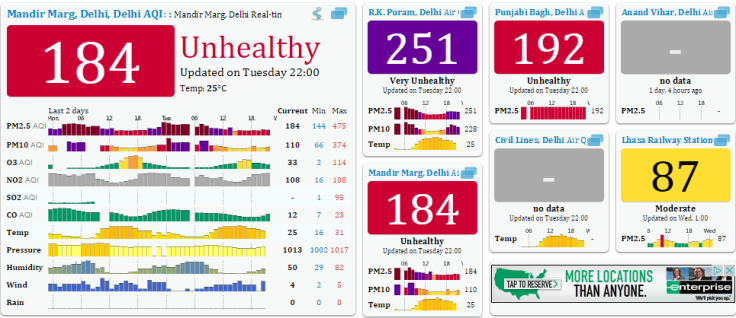Machine Learning Based Mobile Microscope Might Help Detect Air Quality Better

Researchers from the University of California at Los Angeles have developed a new way to measure air quality. They have developed quite a unique mechanism to measure air quality for cheap — a mobile microscope connected to a smartphone which will detect the air quality using a machine-learning algorithm.
It uses an air sampler along with a holographic microscope of the size of a microchip.
The aim of the invention is to provide users the ability to accurately assess dangerous airborne particulate matter and avoid health hazards, which kill 7 million people prematurely annually according to the World Health Organization.
Accurate analysis of air quality is very important for improving this air quality and the researchers claim this device might be capable of such analysis.
"With lab-quality devices in the hands of more people, high-quality data on pollutants as a function of time from many more locations can be collected and analyzed. That can then help governments develop better policies and regulations to improve air quality," A y dogan Ozcan, UCLA Chancellor Professor of Electrical Engineering and Bioengineering and associate director of the California NanoSystems Institute, and the lead author on the paper said.
Particulate matter in the air is the biggest contributor to air pollution. According to WHO, particulate matter of more than 2.5 micrometers can cause cancer.
The device can reduce the reliance of users on other mechanisms to assess air quality such as those assessed by the Environmental Protection Agency in the U.S. using air sampling stations. It can do the job that more expensive equipment, generally costing between $50,000-100,000 do at a very cheap price is a better alternative cheaper but inaccurate equipment.
UCLA calls the mechanism the C-air and it is as accurate as high-end equipment used by EPA but costs much less —it can screen 6.5 liters of air in 30 seconds and generate images of airborne particles.
It then transmits this information from a remote computer to a smartphone and analysis it using a machine-learning algorithm. The mechanism has been tested at many sites in California including Santa Clara and Los Angeles. It was deployed at the Los Angeles airport and was able to detect airborne particles along the path of landing planes.
The role of machine learning is to provide quick analysis of air particles. This kind of analysis can help monitor air quality at airports and other places and also during situations such as catastrophic weather situations. It might also help check the presence of particles such as pollen and mold and help warn patients with allergies and diseases such as asthma.
Cheaper air quality analysis might help create better air quality solutions. With major world capitals facing issues with the presence of smog in the air, it might be a better alternative to existing air quality indexes.
© Copyright IBTimes 2025. All rights reserved.



















